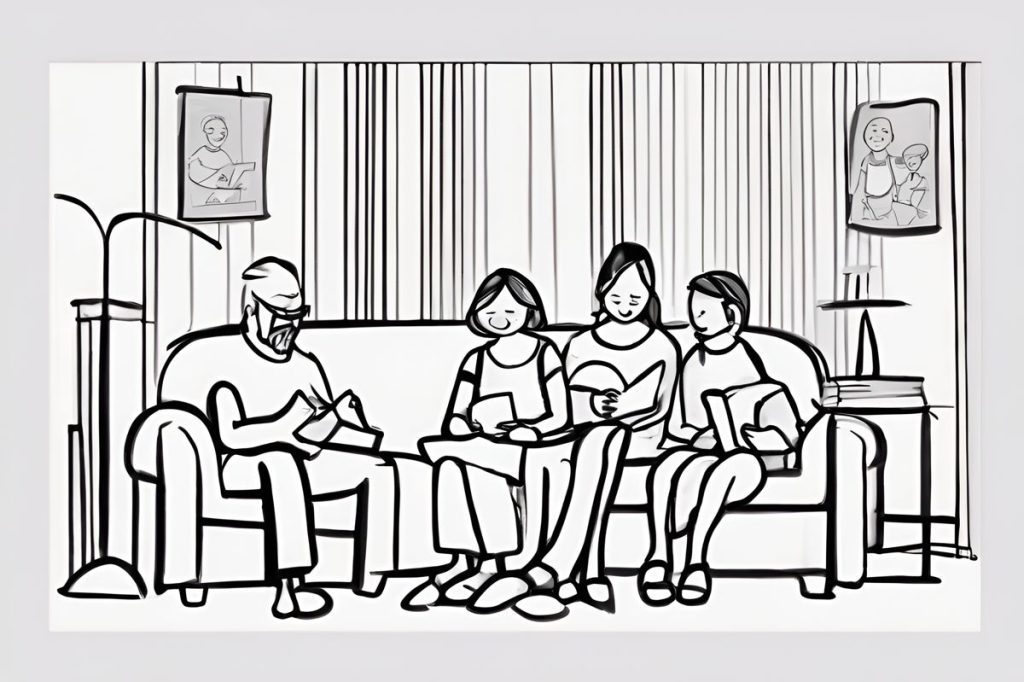The controversy over the removal of a children’s book featuring gay parents underscores the ongoing battle for inclusivity in education. LGBT rights groups demand accountability from the education ministry, emphasizing the importance of representing diverse families in educational materials and challenging societal values.
What sparked the recent controversy involving the removal of a children’s book by the education ministry?
A children’s book depicting families with gay parents was removed from a nursery after a parent’s complaint, leading to a dispute. LGBT rights groups challenged the ministry for accountability, highlighting the importance of inclusive representation in educational materials and societal values. The controversy underscores the ongoing struggle for inclusivity in education.
Dispute Over Educational Material Depicting Diversity
The recent controversy began in a quiet nursery, where a seemingly innocuous book about diverse family structures sparked heated discourse. It was a typical Wednesday when the education ministry found itself at the heart of a contentious debate. The ministry firmly stated that the decision to remove a children’s book featuring families with gay parents was made by the local parents’ association, not by official mandate.
Unrest surfaced following a complaint by a parent, which led to widespread attention from a hunters’ group. The group, known for its influence, released a wave of homophobic rhetoric. This action amplified the issue, propelling it into the public eye and raising questions about the role of educational resources in promoting inclusivity.
LGBT Rights Groups Demand Answers
In the wake of the book’s removal, LGBT rights organizations sought clarity and accountability from the ministry. These groups, champions of diversity and equality, challenged the ministry to justify the removal’s rationale. Their stance was clear: families with gay parents are normal and should be reflected as such in educational materials.
The situation escalated when Rainbow Families Cy, a rights group representing LGBT families, articulated their dismay. They highlighted the daily struggles they face, their rights often disregarded, and their existence questioned. Their letter to the education minister was not just a plea for acceptance but a condemnation of the stigma perpetuated by the removal of the book.
Government Response and Public Backlash
Following the uproar, the ministry clarified their stance, distancing themselves from the book’s withdrawal. They insisted that no official action had been taken to remove any books and that the parents’ association had acted independently. Furthermore, the ministry suggested that teachers have the autonomy to choose supplementary material, as long as it adheres to the curriculum and is approached with sensitivity.
However, this did not quell the discontent. Accept LGBT, another advocacy group, criticized the government’s lack of a firm stance against discrimination. They voiced concern that the government’s inaction indirectly supported homophobic actions. The group’s statement underlined the fear that such complacency could lead to further marginalization of LGBT citizens and a more hostile environment for vulnerable groups.
Educational Materials and Societal Values
The heart of the matter lies in educational resources and their reflection of societal values. The incident at the nursery was not an isolated case; it was the second instance of homophobic backlash regarding school materials within a month. In a separate but equally troubling event, it was reported that a theologian presented students with homophobic content from a Greek bishop, suggesting that heterosexuality was the sole means of unity.
These events, symptomatic of larger societal tensions, illustrate the ongoing struggle for inclusivity within educational settings. As debates continue, the role of diverse representation in children’s literature remains a pivotal point of contention, underscoring the need for dialogue and understanding in a world where diversity is the norm, not the exception.
What sparked the recent controversy involving the removal of a children’s book by the education ministry?
A children’s book depicting families with gay parents was removed from a nursery after a parent’s complaint, leading to a dispute. LGBT rights groups challenged the ministry for accountability, highlighting the importance of inclusive representation in educational materials and societal values. The controversy underscores the ongoing struggle for inclusivity in education.
Why did LGBT rights groups demand answers from the education ministry?
LGBT rights organizations sought clarity and accountability from the ministry after the removal of the children’s book featuring families with gay parents. These groups emphasized the importance of normalizing diverse family structures in educational materials and challenged societal norms that perpetuate discrimination against the LGBT community.
How did the government respond to the controversy surrounding the book removal?
The education ministry clarified that the decision to remove the book was made independently by the local parents’ association and was not an official mandate. They stated that teachers have autonomy in choosing supplementary materials as long as they align with the curriculum and are approached sensitively. However, advocacy groups criticized the government for not taking a firm stance against discrimination and expressed concerns about the potential marginalization of LGBT individuals.
What larger societal issues are highlighted by the controversy over the children’s book removal?
The incident at the nursery is indicative of broader societal tensions surrounding inclusivity and representation in education. It is one of several recent events demonstrating the ongoing struggle for diversity in educational settings. The controversy underscores the importance of promoting understanding and dialogue to create a more inclusive environment where diverse family structures are accepted as the norm.

